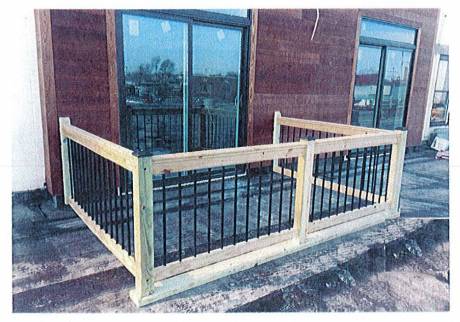Council debates Ellicott Trail cleanup costs, procedures as it advances easement resolution
As the Batavia City Council voted Monday night to consider accepting five easements from the Town of Batavia toward the maintenance of Ellicott Trail, its members encouraged residents to take pride in the 9.7-mile recreational walking and bicycling path by picking up trash along the way.
Council President Eugene Jankowski Jr. said he was on the trail recently and noted that “the part from Jackson to Pearl Street is pretty rough.”
“It’s pretty washed out and there’s debris – there’s surgical masks laying on the side of the road,” he said. “Now, that’s the new thing. (With) COVID, everybody’s throwing their masks away; they’re falling out of their pockets and this waste is laying around on our streets now, and there are some on the trail itself.”
Jankowski said he realizes that it is spring and outside has that “look to it,” but wanted to know the city’s timetable for cleanup and suggested rounding up some volunteers to help out.
City Manager Rachel Tabelski said the process starts with accepting the transfer of the easements at 665 E. Main St., Batavia Gardens, Ellicott Station (two) and Elmwood Cemetery.
The city then would be responsible for maintaining these areas as they are located inside the city limits form Pearl Street Road to Cedar Street, but the county will maintain the DeWitt Recreation Area on Cedar Street.
During planning and construction of the trail, the town acquired various easements for real property in the city but, per a resolution to be formally voted on in two weeks, these parcels will be transferred back to the city.
Tabelski also reported that a volunteer group led by John Roche, owner of Adam Miller Toy and Bicycle on Center Street, is willing to help pick up trash along the trail, and that the city will schedule “ongoing maintenance” to coincide with the park schedule this spring and summer.
Officially opened last year, the 10-foot-wide trail consists of crushed stone along 4.9 miles of old railroad beds. When you add in sidewalks, bike lanes and bridges, the entire trail is 9.7 miles, with the eastern entrance on Seven Springs Road and the western entrance on Industrial Boulevard (off Pearl Street).
Council Member Robert Bialkowski said he was looking for the city’s annual cost to maintain the trail.
Tabelski said it would cost about $7,000 in materials every five years and that city Department of Public Works employees would take care of the maintenance.
Interim DPW Director Ray Tourt said “to figure on eight to 10 times per year for additional mowing.”
“As for materials, we’ll have to kind of figure it out – it is new,” he said. “The town’s idea is that we should be able to go five years without putting a new top on it – another layer of stone dust – but there are some washed out areas that they’ve committed to repair this year.”
Bialkowski then asked for an annual labor cost, to which Tourt replied, “About $4,000 annually, and we’re going to have a bump when we do that recap at around five years. And we’ve got about a week’s worth of work there, also.”
Council Member Paul Viele then asked about security on the trail, mentioning that college campuses have put up blue lights for illumination and for emergency situations.
“Do we have anything back there for these young girls walking the trail? There are a lot of idiots out there, you know, that could be hiding in the woods. I’m just concerned with safety – girls jogging, running, walking, whatever …” Viele said.
Jankowski said most people have a cell phone with them, the trail is “pretty open” and that he feels safe walking the trail because he has a view of 100 yards in each direction. He added that developers didn’t include the expense of having emergency lights, but Tabelski said Viele had a “valid point” as she has considered that as well.
Bialkowski then said he wanted to get back to his original point, calculating that the annual cost to the city for materials and labor would be about $5,500. He said that because the city’s DPW crew is already stretched, he urged residents to pick up trash when they see it and “to pitch in.”
Jankowski then brought up that he considered the trail’s crossing point on Cedar Street as dangerous.
“You can’t see that traffic from that location, and I know enough to cross down the road more. But if you follow the trail, it wants you to cross on the downslope, near the overpass where the train tracks are, and your blind spot is that left side,” he said.
He asked Tabelski to look into possibly moving it closer to the entrance of DeWitt Recreation Area. He said it was a “marking issue” and suggested moving it over about 30 feet to make it safer, especially for those riding bikes.
Calling it a “nine mile park,” Jankowski said the trail is very popular. He said he must have seen a couple hundred people along the trail recently.
Council Member John Canale then suggested an “adopt a highway” program where certain community groups commit to maintaining a section on an annual basis.
“We might somewhere down the road, may want to look at offering some various local groups, especially groups of young people, that might want to take on a project like that and say, ‘This is our portion of the trail that we’re going to adopt and every spring we’re going to go and do cleanup,’ ” he said.








